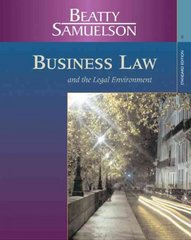Question
Let T = 24 be total available hours, L be hours of leisure, and n be hours of work. Let w > 0 be the
Let T = 24 be total available hours, L be hours of leisure, and n be hours of work. Let w > 0 be the hourly wage and p > 0 be the price of the consumption good. Finally, let C be consumption. Assume that the utility function is u(C, L) = C * L
(a) Suppose that an agent receives a lump-sum amount of B dollars if he works more than 8 hours. Find the optimal bundle (L*, C*) and illustrate graphically your solution.
(b) Suppose that if an agent decides to work beyond regular hours (say 8 hours), then he is given an additional s dollars for every hour (beyond 8 hours). Find (L*, C*) and illustrate graphically your solution.
(c) Suppose that the law forces an agent to work no less than 3 hours and no more than 8 hours. Find (L*, C*) and illustrate graphically your solution.
(d) Suppose that an agent receives an amount B > 0 only if the agent is inactive, i.e., n = 0. Find (L*, C*) and illustrate graphically your solution.
*Questions are all independent and conditions in each question have no relation to the other questions
Step by Step Solution
There are 3 Steps involved in it
Step: 1

Get Instant Access to Expert-Tailored Solutions
See step-by-step solutions with expert insights and AI powered tools for academic success
Step: 2

Step: 3

Ace Your Homework with AI
Get the answers you need in no time with our AI-driven, step-by-step assistance
Get Started


